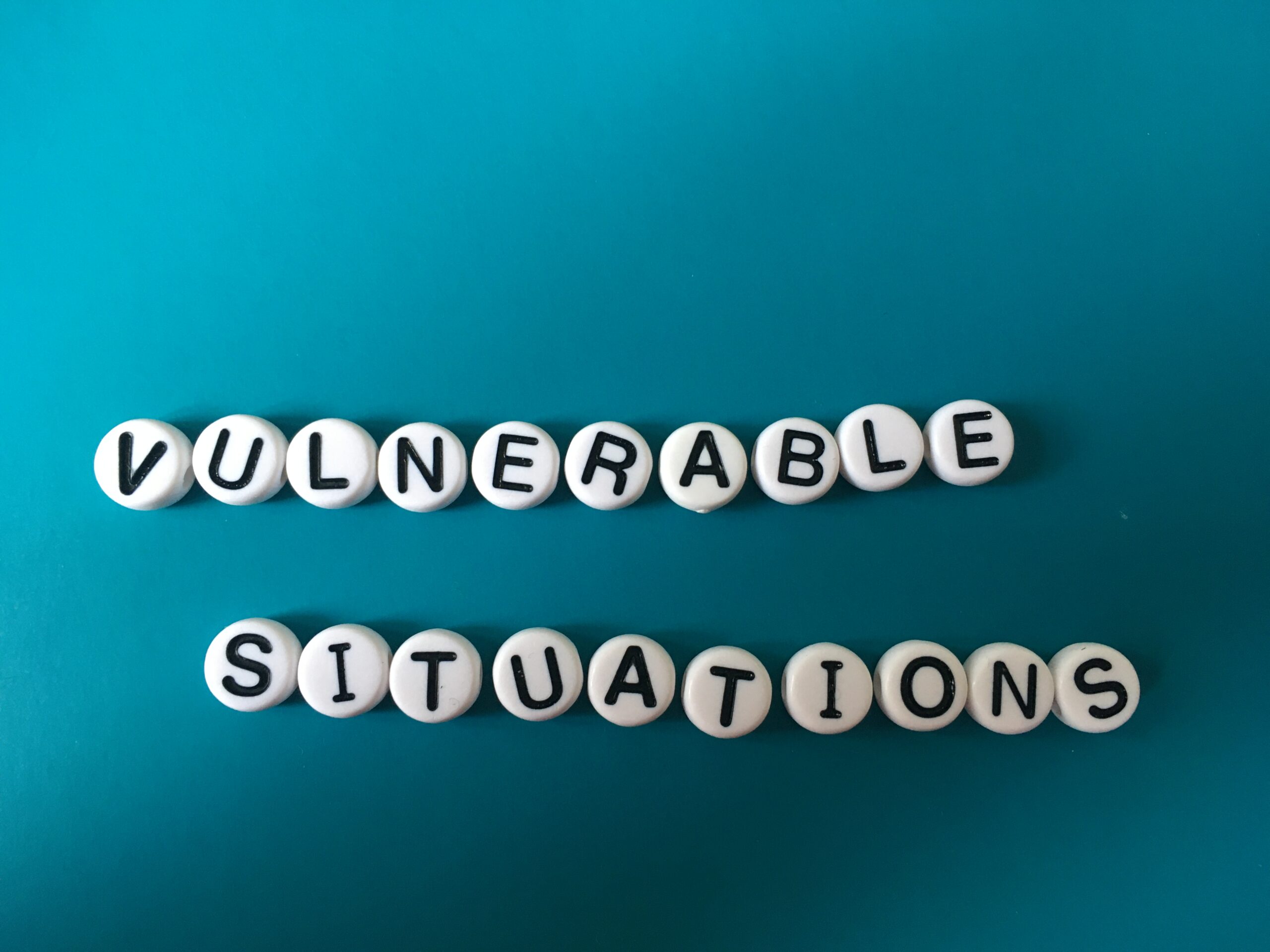Some reflections on the vulnerability concept as used in the UN report „The impacts of climate change on human rights of people in vulnerable situations“
On 6 May 2022, the UN Report of the Secretary-General on The impacts of climate change on the human rights in vulnerable situation was published. The report elaborates on different adverse impacts of climate change on ‘people in vulnerable situations’ and discusses how the rights of ‘persons in vulnerable situations in the context of climate change’ can be promoted and protected. The report also contains conclusions and recommendations. In this blog-entry, we will present some reflections on the document, in particular on how the concept of vulnerability is used and understood.
Monika Mayrhofer
On 26 July 2021, the UN Human Rights Council (HRC) adopted Resolution 47/24 on Human rights and climate change, calling inter alia upon states to better promote the human rights of people in vulnerable situations with regard to the impacts of climate change and to develop, strengthen and implement policies for the protection of the right of people in this context (UNHRC 2021, paras 6–7). The resolution also contained a decision to organise a panel discussion ‘focusing on the adverse impact of climate change on the full and effective enjoyment of human rights by people in vulnerable situations, and best practices and learned in the promotion and protection of the rights of people in vulnerable situation’ (UNHRC 2021, para. 10). As a result of the panel discussion and of a broader consultation process involving Member States, academic experts and civil society organisations, the HRC furthermore requested the Secretary-General to submit to the Human Rights Council a report on the adverse impact of climate change on the full and effective enjoyment of human rights of people in vulnerable situations. The report was published on 6 May 2022. After a presentation of different adverse impacts of climate change on ‘people in vulnerable situations’, the report discusses how the rights of ‘persons in vulnerable situations in the context of climate change’ can be promoted and protected. The report also contains conclusions and recommendations. In the following, we will present some reflections on the document, in particular on how the concept of vulnerability is used.
The resolution as well as the report reflect a trend that has been observable for some time: Instead of ‘vulnerable groups’ UN human rights documents increasingly refer to ‘persons’ or ‘people in vulnerable situations’. The reason for this shift is not explicitly explained and justified in the document, although it can be assumed that this might be a reaction to a growing concern regarding the usage of the concept of vulnerability. In particular, the labelling of certain groups as vulnerable has been criticised to be stigmatizing, resulting in the enforcement of stereotypes and neglecting differences between persons who are assumed to belong to the same group. In the concept note to the panel discussion leading up to the drafting of the report, there seems to be some awareness on the problematic dimensions of the concept as the note explicitly affirms that ‘no one is inherently vulnerable’ (Human Rights Council 2022, 2). However, the concept of vulnerability is nevertheless used as a central reference point and neither is there a clear and explicit definition of the concept nor is there an abandonment of group-focused approaches. From paragraph 4 of the report it can be assumed that the phrase ‘people in vulnerable situations’ is used to refer to people ‘who are disproportionately at risk from the adverse impacts of climate change’ (UN Secretary General 2022, para. 4). It is, however, not spelled out what ‘disproportionally at risk’ exactly means, thus, who is counted as being in a vulnerable situation and who not. The paragraph also contains a list of different groups who may be ‘disproportionally’ endangered in this regard such as ‘indigenous peoples, local communities, peasants, migrants, children, women, persons with disabilities, people living in small island developing States and least developed countries, persons living in conditions of water scarcity, desertification, land degradation and drought and others in vulnerable situations who are at risk of being left behind.’ This focus on groups leads to problematic generalisations and omissions. It is not clear, why, for example, all local communities, all women or all migrants should be disproportionally affected by the adverse impact of climate change and what is exactly meant by ‘being left behind’. In the case of migrants, mobility could also be a successful adaptation strategy, reducing exposure to adverse impacts of climate change. In some cases – depending on the specific contexts and on other intersecting categories such as age, social class or family status, men are particularly negatively affected by the impact of specific climate-related events, for example drought or heat waves (see, for example, Klinenberg 2015).
Thus, although the phrase ‘vulnerable situations’ seems to avoid attaching the concept with all its problematic consequences to specific groups, in most cases, however, the concept is used to refer to specific groups even more so because group-based approaches are not dispensed with.
It is also observable in the document that the concept is a very ‘flexible’ or, using a more critical spin, a fuzzy concept. Although sometimes referring to specific groups, in some cases the phrase of ‘people in vulnerable situations’ is also used as a residual category that should comprise all groups or individuals not explicitly mentioned. Sometimes it is used as a synonym for exposure to climate change-related events, sometimes it refers to poverty, in other cases to poor housing conditions. The term is used not only to refer to individuals, groups and communities in vulnerable situations, but also to countries, ecosystems, agriculture or, in general, to social, economic and environmental vulnerabilities.
As has been pointed out in another context, a vulnerability approach may also lead to a limitation of human rights. Although the document mentions at the beginning, that ‘the nature and scale of the climate crisis is such that all people everywhere face significant risk’ (UN Secretary General 2022, para. 5), the document later points out that ‘protecting the human rights of people in vulnerable situations from the worst impact of climate change requires urgent action (…)’ (UN Secretary General 2022, para. 6). That is a considerable limitation as from a human rights perspective the realisation of human rights for every person should be the objective and not only for specific individuals and groups in vulnerable situations, which are, moreover, fuzzy and not clearly defined. Although the rights of some persons might be more negatively affected by the various impacts of climate change, the starting point for accessing differences in the enjoyment of rights – also in the context of climate change – should be the principles of non-discriminations and equality, which are well-defined and well-established in human rights law and which should guarantee the equal enjoyment of rights for all.
Literature:
- Human Rights Council. 2022. ‘Panel Discussion on the Human Rights of People in Vulnerable Situations in the Cocntext of Climate Change. Concept Note (as of 16 June 2022)’. https://www.ohchr.org/sites/default/files/2022-06/CN_Climate_change_panel.docx.
- Klinenberg, Eric. 2015. Heat Wave: A Social Autopsy of Disaster in Chicago. Second edition. Chicago ; London: University of Chicago Press.
- UN Secretary General. 2022. ‘The Impacts of Climate Change on the Human Rights of People in Vulnerable Situations, 6 May 2022’. A/HRC/50/57.
- UNHRC. 2021. ‘Resolution Adopted by the Human Rights Council On14 July 2021, 47/24. Human Rights and Climate Change, UN Doc A/HRC/RES/47/24’.

Contacts
